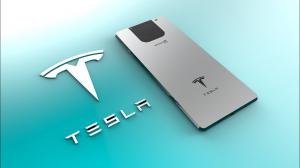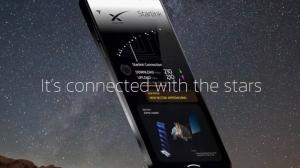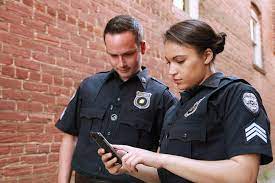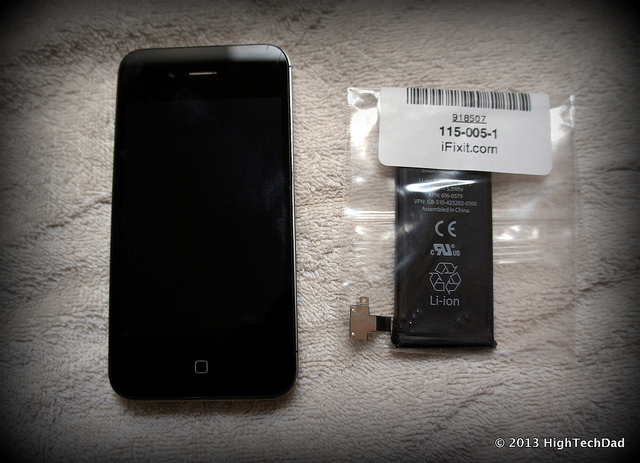The Wii U may have been a mistake, but the Nintendo Switch is a success, with 32 million sold worldwide. It’s now been about two years since its debut, and the ambitious little console has made quite a stir in the gaming world. While most were initially concerned with the Switch’s “gimmicky” functionality of being able to play at home and on the go, the Switch’s portability has clearly been a success, with the announcement of the new Switch Lite proving there’s strong demand for handheld gaming. The Switch is a powerful console with a mix of portability and first-party quality games, as well as family-friendly features.
Design: A Tablet, GameBoy, and Home Console all in One
The Switch feels more like an expensive, plastic toy than the Wii U. This console feels great and is built entirely of plastic. In the box, you’ll get the console itself (a small tablet-like device with a 6.2-inch touchscreen), two controllers (dubbed a “Joy-Con”) and their detachable bumpers, a controller dock for combining the two Joy-Cons into one full-sized controller, a dock for connecting it to your TV, and the accompanying cables needed for everything.
It is extremely lightweight and almost impossible to believe so that it can be carried around. There are two stereo speakers at the bottom and one USB-C connector for connecting the dock or charging the console. At the rear, there are two more slots for cooling and a kickstand that also hides the Switch’s microSD slot for expanding storage. The kickstand is perhaps the biggest weakness of the console’s build, being fairly flimsy and lacking any way to adjust the angle. On the top, you will find a volume control, power button, vent, mic/headphone jack, as well as card slot.
The Switch is a powerful console because of its portability and excellent first-party gaming. It also has family-friendly features.
Let's now move on to the Joy-Cons. Joy-Cons have two buttons on each side (one trigger, one bumper), four-way D-pads (the right and left buttons are directional), an analog stick and a menu button. The screenshot and home buttons are on the left and right. They work well with most applications and include HD rumble and gyroscopic inputs, as well as motion controls. The right controller also has an IR camera and an NFC reader if you’ve got amiibos (to add them, simply hold the amiibo over the stick, and it’ll recognize it).
You can charge the devices by placing a Joy-Con on top of the console. Then, slide the Joy-Con down to lock it in place. You can remove the device by pressing the button at the top. This works flawlessly and is pretty genius on Nintendo’s part.
To play your console tabletop, take out all Joy-Cons and flip the kickstand. Then, you can use each controller independently or attach them to the dock. One of the coolest features of the design is that each Joy-Con can be used as a separate controller for multiple players, meaning you’ve always got two controllers for local multiplayer. You can either use these with or without the bumpers to make it easier to use the shoulder buttons embedded in the rail, but they’re a little difficult to use without.
To switch back to the docked mode for playing on your TV like you would any other console, simply place the Switch in the dock and it’ll lock into place and appear on the screen.
Installation: Turn It on, and You Can Play
The setup of the Switch is simple, despite the fact that it has so many features. We’ll explain how to use it both docked and undocked since they’re a bit different.
For handheld use, take your console and attach both Joy-Cons, hit the power button on the top and you’re ready to play.
The dock use process is more complex but not too complicated. Connect the dock to your TV using the HDMI cable. Next, attach the power cable to the dock and insert the console. The screen should now glow and indicate the current battery level. Now, remove the Joy-Cons from the sides, and here, you’ll need to decide what form you plan to use them in.
You can use them independently, use one by itself or attach both to the controller dock for a more typical console experience (note that you can also get a Pro Controller, which more closely resembles an Xbox controller if you’d like). Pairing the Joy-Con is a bit strange, but all you essentially have to do is let the Switch know how you’re using them. Whether you’re using one Joy-Con sideways or two combined, just press the left and right shoulder buttons down, and the Switch will identify the orientation automatically.
After your controllers have been set up, you can follow the normal Wi-Fi and account creation steps on the Switch. Once you are done, the Switch will take you through all of the usual steps for creating an account and Wi-Fi.
Here are some great accessories for Nintendo Switch.
Performance: Good for Local or Single-player Multiplayer
The Switch’s functionality as a mobile and at-home console system each work perfectly, but how does it perform while gaming? Let’s get into the details. It has a resolution of 720p handheld and 1080p docked. Although it may seem a little outdated with 4K on the horizon, this screen never seemed to bother us.
During our sessions, there were no big drops in frame rate as well, so rest assured that Nvidia’s custom Tegra X1 seems like it’s got plenty of power for the Switch’s needs — just don’t expect it to match up to an Xbox One or PS4. As for frames per second (fps), it depends on what game you’re playing, how many players you have, and if it’s online or offline.
The Switch's frame rate is limited to 30FPS for many games. However, some developers have introduced 60FPS in certain circumstances. Take Mario Kart 8 Deluxe, for example: Docked it gives you 1080p/60fps in single-player mode; handheld is 720p/60fps in single-player mode; single-player multiplayer with 60fps and two-player multi-player online multiplayer at 30fps.
It all depends on what the environment is like. It makes perfect sense that most games perform well in docked mode. Despite these somewhat lackluster numbers, most people won’t care, and it didn’t detract from the majority of games we tested. But if you’re used to playing a title like Doom at 144fps on your PC, then you will probably notice. At the very least, it is consistent with these numbers.
The Switch makes a great choice if you enjoy playing games on your sofa with your friends, taking your gaming along on your commute, or just love Nintendo games.
We tested several single-player titles, including first-party games such as Super Mario Odyssey and The Legend of Zelda: Breath of the Wild, and indie games such Stardew Valley, and ports like Doom. The Switch performed admirably with each title, providing an enjoyable gaming experience without stutters and keeping the frame rates high.
We love the Xbox One's strong first-party selection and ability to play couch-co-op as well as multiplayer. With the Xbox and Playstation, you commonly need two consoles and an online connection for multiplayer, and many people don’t want to pay the cost to do so. The Joy-Cons can be removed from the Switch and given to friends.
Local multiplayer was tested with Super Mario Party and Mario Kart 8 Deluxe. After playing just a couple of rounds, the Joy-Con was so easy to set up that even non-gamers found it simple to use. This is the area where the Switch is the best console. The Switch is the perfect console for couples or families who want to play in-person, rather than online multiplayer. Eight people were able to play Super Smash Bros. The Ultimate Switch exceeded all our expectations and performed very well.
This brings us to online multiplayer. The original Switch was launched without any online services like Xbox Live and PlayStation Plus. However, Nintendo Switch Online launched in September 2018. It is required to play online, mainly because of the cost.
Despite the service’s extremely low cost at only $20 a year (or $35 for a family plan that allows up to eight users, also available at $4 a month), many are frustrated with its capabilities. There are some nice perks to this service, such as access to the Nintendo Switch Online app and the Nintendo Switch Online virtual console. It is however, the most disappointing of all online console services.
The service requires that you use your phone to access many functions, such as online voice chat. This is a far cry from the Xbox and PlayStation. You get a collection of NES games instead of free games like Microsoft and Sony.
This is nice but it's not the same as the Xbox or PlayStation games. Although connectivity and matchmaking are good, online gaming performance is poor compared with other consoles that rely solely on WiFi. You can purchase an Ethernet dongle, which is not part of the box.
All in all, the Switch performs very well for single-player and local multiplayer experiences but suffers from the lack of an ethernet port and a handicapped online service, making it less than ideal for gamers who tend to play a majority of their games online—especially competitively.
Software: Simple to Use
Thankfully, the cartoony and childlike aesthetics of the Wii U’s software are gone in place of a cleaner and more mature UI, much like the console as a whole. The Switch can also be used as a tablet. However, not all games are compatible with the touchscreen. This makes for better UI navigation than those that use only controllers. The touchscreen is easy to use, making it easier for you to type in information or browse apps.
The Switch's quick startup screen will appear. Here you can quickly jump into any app or game you have recently played. The home button can be used to go directly to the main screen. Here, you’ll see a long line of tiles for your games and apps. You can scroll to the right or left to choose one or jump down to the lower row for things like news, the eShop, screenshots, controller settings, or the console’s settings itself.
The bottom left also displays your current mode or controller setup (even the colors of the Joy-Con) so you know what mode you’re in. The bottom right shows you the buttons that can be used to interact with each option. At the top, you’ll find your profile and friends list. To the right of this, there’s a clock, Wi-Fi meter, and battery gauge. Currently, there are no themes or backgrounds aside from a light and dark theme, but hopefully, they’ll add more in the future.
Low Battery Life
Battery life is one of the biggest concerns with mobile devices like the Switch. The battery size was small due to the small dimensions. It contains a 4,310mAh lithium-ion cell. The Switch can run for between 2.5 and 6.5 hours, according to Nintendo. This depends primarily on what you’re doing with it. For beefier games like Breath of the Wild, it’s supposed to last about 3 hours. For charging, they say it’ll need about the same to fully charge (while in sleep mode).
These claims were most accurate in our tests. It all depends on how bright the console is and whether it was online or Airplane mode. With Airplane mode on and the brightness reduced, you can squeeze a little more juice out of it, but it’ll be hard to get more than 4 hours out of the Switch for most games.
This isn’t horrible, but you will want to do some digging to find a suitable power brick to increase your lifespan (there’s a Nintendo-branded one sold by Anker). Since the battery is internal, you will have no option to swap it out for a new one when it inevitably starts wearing out. However, we didn’t experience any major dips in the battery’s performance during use.
Pricing: Competitive and Affordable
The Switch's $300 price tag is reasonable considering that many of the consoles currently in production range between $200 and $500, depending on the version. You get two controllers for the initial price. This will allow you to avoid having to purchase an extra controller to use local multiplayer.
The Switch's $300 price tag is affordable considering that many of the consoles currently in the lineup are priced between $200 and $500, depending on the version.
Other costs you may need to consider are that additional Joy-Cons (which you’ll need to play four-player games) will run you about $70 (note that price essentially includes two). The online service that’s required for most online games is either $4 a month or $20 a year, making that the cheapest out there (aside from PC). Lastly, most first-party games are quite expensive and rarely go down, but there are a ton of good indie games for cheap out there as well. The Switch is one of the most affordable consoles.
Nintendo Switch Vs. Xbox One Vs. PS4
Comparing the Switch to the Xbox One or PlayStation 4 is a bit like comparing apples to oranges, but there isn’t really anything else out there to compare it with since no other company has such a powerful handheld console.
The Xbox One has a more powerful GPU, but it depends on the version. The Xbox One and PS4 have a clear advantage in this area. However, the Switch truly excels as a local multiplayer device, so it’s up to you to decide what’s more important. The PlayStation's lineup is perhaps the most impressive, aside from its specs. This can be attributed to the exclusives and graphics capability. However, this will depend on your personal tastes, as Nintendo also has the greatest selection of exclusives.
The Switch is an entirely new console. You won’t get another device that doubles as both a mobile and at-home console, so this should be the primary factor when making your decision. Are you looking for the most advanced graphics on a console? Are you a fan of online gaming? The Switch might not be right for you. The Switch may not be for you if you enjoy playing games on your couch with your friends, taking your Nintendo gaming along on your commute, or just simply love Nintendo games.
An innovation in gaming. The phrase “Jack of all trades, master of none” sums up the Switch pretty well, but that isn’t a bad thing. It does a whole lot well when it comes to portability while being forced to make a few sacrifices in hardware, which doesn’t detract from the awesome gaming experience.





